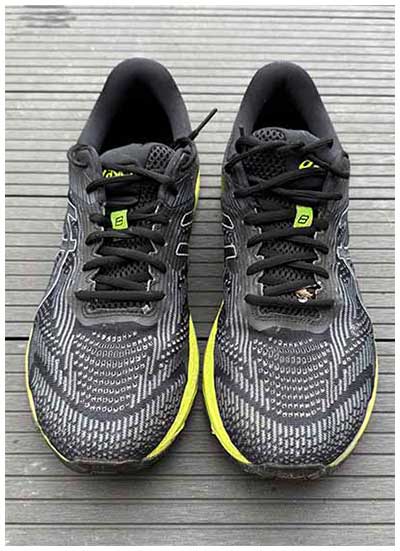Running is a sport that initially requires very little equipment, but there is one item where I won’t compromise: running shoes.
They form the foundation for a healthy, long-lasting running experience, and investing in quality here is essential.
Some people approach running shoes with almost scientific precision, debating everything from brand to cushioning, stability, heel drop, and more. For elite runners, where every detail can matter, this may make sense. But for recreational runners who hit the trail a few times a week, all this technical focus can seem a bit much. My advice? Take running shoes seriously, but don’t overthink it.
 Starting Out – What Shoes Do I Really Need?
Starting Out – What Shoes Do I Really Need?
For beginners who are just starting to run regularly, a simple, affordable pair of running shoes is often enough. These don’t need high-tech features and might even be last season’s model. When you’re running shorter distances of just two or three kilometers, this is perfectly adequate. The only requirement is that the shoe feels comfortable and doesn’t cause blisters. Over time, you’ll get a sense of whether running is truly enjoyable and something you want to keep as a regular habit.
Running Shoes for More Advanced Runners – What to Consider
If you find that running is becoming a long-term hobby, it’s time to invest in a more suitable pair of shoes. Personally, I started by buying last season’s shoes, which were often up to 50% cheaper but still high quality. Trying them on in a store and taking a few laps around gives you a feel for the shoe – that gut feeling is important. If they feel good right from the start, they’re likely a good fit.
Eventually, I went to a specialist running store in Kassel for a professional fitting, and it was worth it. They analyzed my running style, foot shape, and specific needs. The advice was invaluable, and I was thrilled with my choice. Professional consultations in larger chains tend to be less comprehensive and offer limited selection, so for serious runners, a specialty store can make all the difference.
The Often-Overlooked Wear and Tear
One factor many runners overlook is the wear and tear on running shoes. Even if they look good on the outside, the cushioning deteriorates after a few hundred kilometers. Often, this only becomes noticeable when you slip on a new pair. Most shoes last around 800 kilometers, after which they lose cushioning and impact protection. This gradual breakdown can be hard to notice but is especially important for regular runners who want to avoid joint strain. Tracking the mileage on your shoes and replacing them in time is well worth it.
Variety and Shoe Rotation
Today, I rotate between two or three pairs of running shoes. This practice allows each pair a recovery period between runs. It also keeps my feet from becoming too accustomed to a single model, which is beneficial for muscles and joints. I choose different shoes for various terrains and distances, ensuring that each run has the right fit and that the impact is spread evenly across pairs.
Conclusion: Focus on the Joy of Running, Not the Science
To sum up, I would advise beginners to start with affordable shoes. For those who run regularly or tackle longer distances, investing in high-quality running shoes and getting a professional fitting is worth it. If you experience joint or foot issues, an individual fitting at a specialty store is almost essential.
In the end, the joy of running matters most, not having the fanciest gear. Running shoes are vital, but there’s no need to make it overly complicated.









